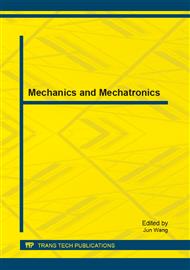p.649
p.654
p.661
p.667
p.673
p.682
p.688
p.693
p.701
Attitude Active Disturbance Rejection Control of Agile Satellite
Abstract:
Based on the mission requirements of agile satellite, the control method of large angle maneuver was investigated in this paper. The single gimbal control moment gyroscope (sgcmg) of pyramid configuration is taken as the executor of the satellite. In order to avoid the singularity of sgcmgs, robust pseudo-inverse steering logic is used. An attitude active disturbance rejection controller (adrc) was designed. The expected attitude maneuver information that got by gauss pseudo-spectral method (gpm) took the place of that got by tracking differentiator (td). The constraints of satellite and sgcmgs are considered. Dynamics decoupling and disturbance observation of satellite were realized by using nonlinear extended state observer (neso). Then based on neso, nonlinear error feedback controller (nlsef) effectively suppresses the disturbance. The simulation results show that the attitude active disturbance rejection controller has steady control performance and can reject the disturbance better.
Info:
Periodical:
Pages:
673-681
Citation:
Online since:
October 2013
Authors:
Price:
Сopyright:
© 2013 Trans Tech Publications Ltd. All Rights Reserved
Share:
Citation:


